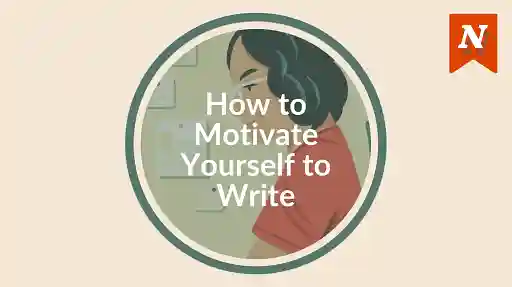Planning ahead and allowing for inspiration are both important aspects of writing and finishing a novel, but it can seem difficult to balance them especially since there is a lot of conflicting advice from novelists and writing teachers. However, the tips below can help achieve that balance.
Some writers swear by making meticulous outlines ahead of time while others insist that barreling ahead and finding inspiration along the way is the only proper path to a good novel.
For inexperienced writers, it can be difficult to know which is best - forward planning or creative freedom in writing - and the working habits of even experienced writers can change over time.
Finding out whether you are a planning sort of writer or a seat-of-your-pants writer is usually just a matter of trial and error. If you're struggling over an outline, if the characters and plot feel dead and contrived and you can't move forward, you're probably not a planner. If the thought of sitting down with an empty page and starting to write makes you feel panicked, you're probably a planner.
However, many writers fall somewhere in between these two extremes, and there are several ways to combine planning and inspiration for the best results. One approach is to make an outline to get started but be unafraid to deviate from it. For some writers, this means going back to rework the outline, but for other writers, moving away from the original outline means the story is finally coming to life on its own.
Flexibility is key, however. If you’re going to take a hybrid approach to writing, falling somewhere in the middle of the two styles, it means you have far more freedom to play and deviate from your plot.
Creating an outline if you’re writing a longer work, such as a memoir or novel is, generally speaking, a good idea. It doesn’t have to be very detailed.
There are some tips to remember if you’re going this route.
Create a broad outline of your novel's key events and turning points
This serves as a roadmap but allows flexibility to explore new ideas that arise during the writing process. This approach ensures you have direction while still accommodating bursts of inspiration.
Plot points and milestones
Identify major plot points and milestones that you want to reach in your story. Knowing where your story needs to go can help maintain focus without constraining your creativity.
Another approach is having some notes about major turning points and the story's end without making a detailed outline. You may have a rough idea of where the story is going but not precisely how you are going to get there; this is one of the best ways to combine a structured approach with one that is more free-wheeling and creative.
Using a reverse outline can be a good way for the writer who works mostly from inspiration to apply structure after the fact and check that the story hangs together. A reverse outline simply refers to outlining after a piece is finished. With a reverse outline, a writer can break down a novel scene by scene and ask some relevant questions including these:
- What questions are answered in this scene?
- What questions are raised in this scene?
- What is the purpose of the scene? (In other words, does it advance the plot, tell us more about the characters or something else? Ideally, each scene will do more than one thing.)
- How does this scene lead into the next one?
The questions may change depending on your aims and the type of book you are writing and can help you decide which scenes need to be revised or cut altogether as well as where scenes may need to be added or rearranged.
Create a reverse outline
As to why you would want to do a reverse outline, think of it as a way of looking down at your writing from a height, seeing where the parts fit and how they fit together, providing a ‘big picture’. It gives you a roadmap after you’ve written a story. There are some tremendous benefits to reverse outlining. Let’s explore a few.
- It improves structure and coherence. Reverse outlining helps ensure that your narrative flows logically and smoothly. By breaking down your work scene by scene or chapter by chapter, you can see how each part contributes to the overall story. This process highlights any gaps or inconsistencies in the plot or character development, allowing you to make the necessary changes to your story.
- Strengthens plot and character development. It helps to ensure that plot points and character arcs are properly developed. By analyzing each scene's contribution to the story and character progression, you can ensure that characters evolve naturally and that plot developments are believable and engaging.
- Scene and chapter organization. Use it to organize scenes and chapters. It allows you to see the big picture of your story's structure and determine if scenes need to be rearranged for better flow and impact.
- Resolves pacing issues. This can be a tricky thing to get right. It will help you identify sections that drag or move too quickly and adjust the pacing.
- Clarifies themes and motifs. You can see how effectively themes and motifs are woven into your story. You may even find that there are themes in your story that you hadn’t intended – but that add to your story.
- Helps with revision and editing. Streamline editing by using an outline, and you’ll spot redundancies, weak points or areas needing expansion.
As to how you draft a reverse outline, you will have to see what works for you. Chelsea Abdullah. One of her tips is to:
Write your reverse outline while rereading your first draft. Writing the outline while rereading will allow you to think critically about each chapter in the moment, which will give you some great in-context notes for later, when you’re trying to review the story as a whole.
Another interesting way – if you’re visually oriented – is to create a visual representation of your story. Use a spreadsheet or a round pie chart or visual mapping tool to organize your summaries and analyses. You could even use a pie chart to map each chapter, or perhaps even section. This visual aid can help you see the overall structure of your draft at a glance. It could also be pinned up on a corkboard above your desk, which you can refer to. Some writers also make use of post-its notes in different colours. Another printed out her really long manuscript on different colored papers, which aided in the revisions. Create a mind map of each chapter.
You could also take inspiration from the world of TV and film and create a story board. This is a graphic organizer that shows illustrations of your story displayed in sequence. You can add some text to it as well to guide you. Each panel should represent each scene or chapter. Include brief summaries and key visual elements.
Some writers swear by using index cards. Here you’ll write a brief summary of each scene or chapter on individual index cards. Include key points, purposes, and any questions raised or answered.
And, finally, consider using a bullet journal, use bullet points for each scene or chapter. Use the journal’s index or page numbering to easily navigate through the outline.
What are some techniques you use to balance immediate inspiration with planning?









With some of my books, I make a brief outline of certain actions and scenes to cover and when then I sometimes improvise as I go along in the rough draft. This style reduces potential stress and makes my story smoother.
Todd Hicks - 10 months ago
Thank you for sharing your process! Your approach of having a brief outline and then allowing yourself the flexibility to improvise sounds like a great way to keep the story dynamic while still maintaining direction.
Dirnise At Now Novel - 9 months ago